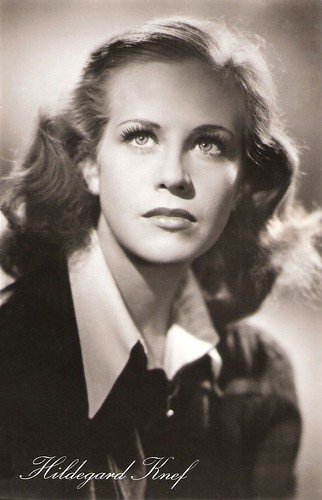
East-German postcard by VEB Progress Film-Vertrieb, Berlin, no. 7/319. 1957. Photo: DEFA. Hildegard Knef in Die Mürder sind unter uns/Murderers among us (Wolfgang Staudte, 1946), also known as the first Trümmerfilm, an aesthetic choice for those films made directly after World War II dealing with the impact of the battles in the countries at the center of the war. The style is characterized by its use of location exteriors among the 'trümmer' (rubble) of bombed-down cities to bring the gritty, depressing reality of the lives of the civilian survivors in those early years. Staudte's work in anti-Nazi films, such as Murderers among us (1946), was also a personal working through of his film career under the Nazis (he played a small part in the anti-Semitic film Jud Süß/Süss the Jew (Veit Harlan, 1940)).

German postcard. Photo: Omega Film. Autographed postcard of Alexander Kerst in Ciske - Ein Kind Braucht Liebe (Wolfgang Staudte, 1955), based on the novel by Dutch author Piet Bakker. This was the German version of the parallel-made Dutch film Ciske, de rat (Wolfgang Staudte, 1955), situated and shot in the city of Amsterdam (with interiors shot at the Amsterdam Cinetone film studio). Kerst played the sailor Freymuth, Ciske's father. Part of the Dutch cast played in the German version as well, including Kees Brusse as Ciske's teacher Bruis, and young Dick van der Velde as Ciske himself. While the Dutch version became the third-best viewed Dutch film in the Netherlands and won a Silver Lion in Venice, the German version was not a huge success in Germany and remained one of the most unknown films of Staudte.

German postcard by Franz Josef Rüdel Filmpostkartenverlag, Hamburg-Bergedorf, no. FT 21. Photo: Bavaria / Schorcht / Gabriele. Maria Schell in Rose Bernd (Wolfgang Staudte, 1957). The film was adapted from the play of the same name by Gerhart Hauptmann and was entered into the 1957 Cannes Film Festival.
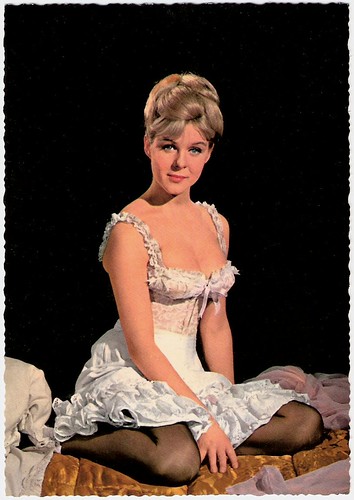
German postcard by Krüger, no. 902/190. Photo: Bernard of Hollywood. June Ritchie as Polly Peachum in Die Dreigroschenoper/The Three Penny Opera (Wolfgang Staudte, 1962). The reactions to this French/German adaptation of the Kurt Weill-Bertolt Brecht piece were mixed although the critics were positive about the central performances of Curd Jürgens as robber captain MacHeath and his romantic interest Polly Peachum (Ritchie), the daughter of beggar king J. J. Peachum (Gert Frobe). For the film's American release, distributor Joseph E. Levine hired Sammy Davis Jr. to play the Ballad Singer, who narrates the story, introduces the scenes, and sings the opera's most famous song 'Moritat' (The Ballad of Mack the Knife).
Attacking the conservative establishment’s black-and-white lies
Olaf Möller on the festival site:" Wolfgang Staudte (1906-1984) is arguably the most widely venerated director of German postwar cinema (besides Helmut Käutner), albeit less for his art than for his political outspokenness – a man of the left shackled to no orthodoxies.
Like no other prominent figure of the early Bonn Republic film industry, Staudte attacked the conservative establishment’s black-and-white lies, addressed issues on which others remained silent, and shed light on dark stories of the present as well as the recent past. He did this, in the same way, more or less, as he had done between 1945 and 1956 for DEFA, the main production company of what in 1949 became the German Democratic Republic.
There was one key difference between these periods. With Die Mörder sind unter uns (1946), Rotation (1948), and Der Untertan (1951), he was in synch with the communist mainstream, making him the (soon to be founded) nation’s poster boy for the seventh art, while with Rosen für den Staatsanwalt (Roses for the Prosecutor, 1959), Kirmes (1960) and Herrenpartie/Muški izlet (1964), he found himself called 'Nestbeschmutzer' by the other Germany’s rightwing mainstream, its reactionary loudmouths.
Staudte was very serious about his politics and certainly wanted to be remembered as a rebel whose world-weary, laconic version of “Fiat iustitia et pereat mundus” (Let justice be done, though the world perish) would be “Cowardice turns every form of government into a dictatorship” (as the commemorative plaque at his birthplace in Saarbrücken has it)."

German postcard by Film-Foto-Verlag, no. 3908/1, 1941-1944. Photo: Tobis / Star-Foto-Atelier. Charlie Rivel in Akrobat Schööön!/Bravo Acrobat! (Wolfgang Staudte, 1943). In this comedy, Staudte's first feature film, a circus clown rises to stardom. The film was loosely based on the Spanish-born Rivel's own life, who was a famous musical clown.
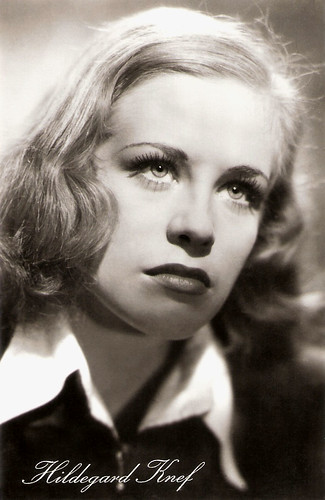
German postcard by VEB Progress Film-Vertrieb, Berlin. Photo: DEFA, no. 14 M/300. Hildegard Knef in Die Mürder sind unter uns/Murderers Among Us (Wolfgang Staudte, 1946).

German postcard by Kunst und Bild, Berlin-Charlottenburg, no. V 118. Photo: Bavaria / Schorcht / Gabriele. Raf Vallone in Rose Bernd (Wolfgang Staudte, 1957). Following 1956 Wolfgang Staudte worked in West Germany.

Dutch postcard by N.V. Int. Filmpers (I.F.P.), Amsterdam, no. 1075. Photo: Bavaria Filmkunst. Maria Schell in Rose Bernd/The Sins of Rose Bernd (Wolgang Staudte, 1957).
A director of extraordinary versatility
Olaf Möller: "But none of this says anything about Staudte the filmmaker, a director of extraordinary versatility whose finest achievements can be found in works often just superficially discussed, such as the proto-feminist drama Rose Bernd (1957), or the allegorical coming-of-age tale Das Lamm (1964).
It also says little about his strengths, which were action, adventure and melodrama, and neither about his weaknesses, which are mainly found in his attempts at political satire.
Despite their importance, Der Untertan and Rosen für den Staatsanwalt are loud pasquinades, whose hectoring humour betrays Staudte’s elegance and wit as seen in less well-known films on similar subjects, such as Der letzte Zeuge (1960) or Der Snob (1983).
It also says little the delight Staudte took in making films – in applying his craft, shaping pertinent ideas with even the humblest materials – which he rarely talked about himself.
Staudte may be an even greater filmmaker than he’s commonly given credit for. One just needs to understand what it means to be a citizen-artist, a man for whom being in dialogue with the masses was a duty, a privilege and an honour."

German postcard by Ufa, no. FK 4166. Photo: Peter Bamberger Prod. / Ufa. Hélène Rémy in Pezzo, capopezzo e capitano/Always Victorious (Wolfgang Staudte, 1958).
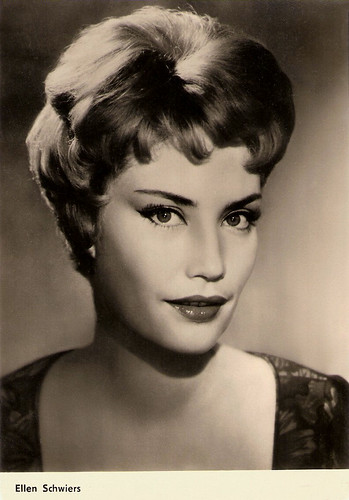
East-German postcard by VEB Progress Film-Vertrieb, Berlin, no. 1679, 1962. Ellen Schwiers in Der letzte Zeuge/The Last Witness (Wolfgang Staudte, 1960). This crime film, also starring Martin Held, was entered into the 1961 Cannes Film Festival.
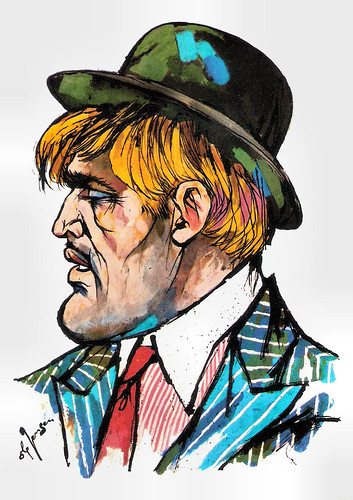
German postcard. Artwork: Ole Jensen. Mario Adorf in Ganovenehre (Wolfgang Staudte, 1966). Caption: Mario Adorf as Artisten-Orje. No more or less than quality entertainment by Wolfgang Staudte, who from the 1960s onwards was confined to films like this one: skillfully directed amusement that only shows the hand of the master occasionally. This film opens with a scene that reminds of one of his best films: Der Untertan, but it is out of place in this light comedy.

German postcard by Rüdel-Verlag, Hamburg. Photo: Constantin / Allianz / Vogelmann. Horst Frank in Fluchtweg St. Pauli - Großalarm für die Davidswache/Jailbreak in Hamburg (Wolfgang Staudte, 1971). This thriller was shot on location around Hamburg including on the Reeperbahn. By the 1970s, Wolfgang Staudte's work was no longer considered particularly modern and he moved to television, on shows such as Der Kommissar and Tatort.
Sources: Il Cinema Ritrovato, J. Steed (IMDb), Wikipedia and IMDb.
No comments:
Post a Comment